- About
-
Discover
City Guides, Tour Guides, Insider's Guides
-
Experience
Book your next trip
-
Lab
Book the digital Experiences
-
Hidden Gems
Hotels. Restaurants, Bars
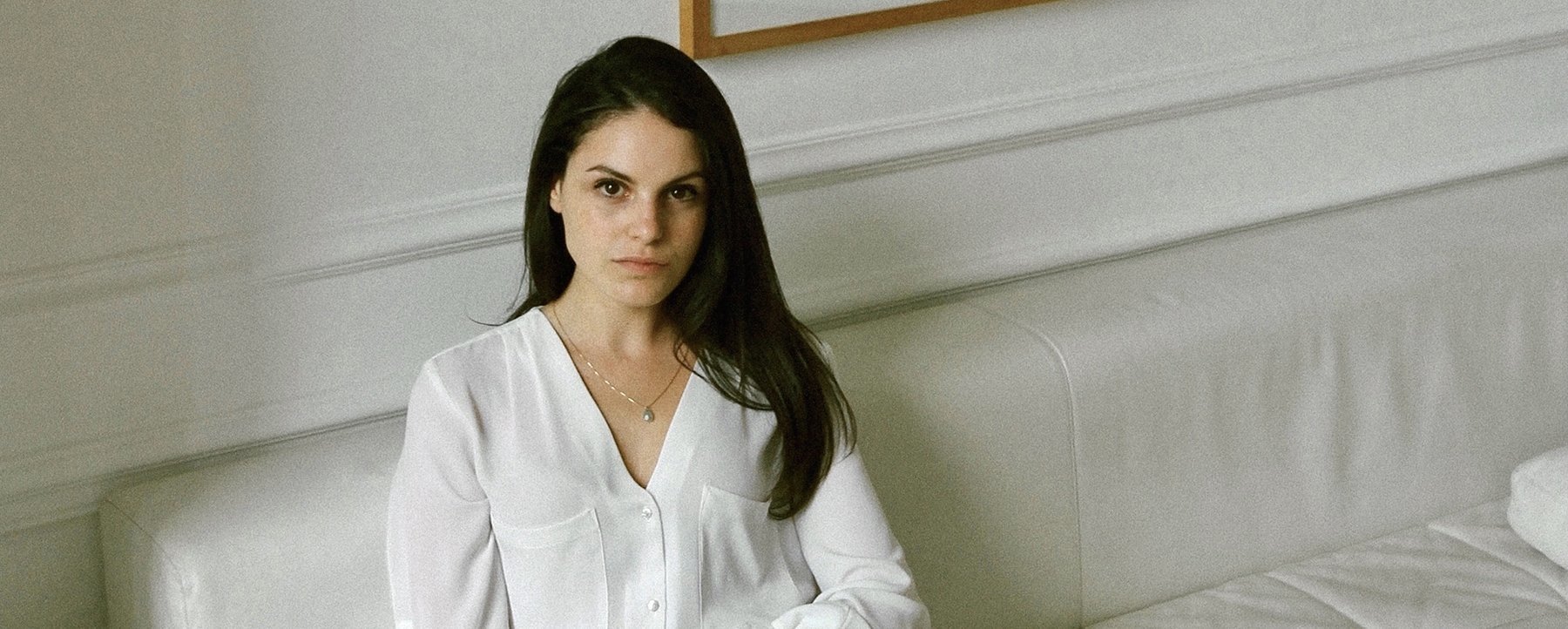
We talked to a Venice-based photographer and founder of interior design brand Ca dei Fabbri: meet Giulia De Marchi.
Editor: Elisa Carassai
It is not the first time we talk about Venice, here on The Maptique. But seeing it through the eyes of a local or someone who has shared many memories on land, is truly a whole different experience. And this is the case with Giulia De Marchi. A freelance photographer and founder of the interior design brand Ca dei Fabbri, hailing from the nearby Treviso, but often in Venice for work and play, de Marchi will guide us around an unknown Venice – a town celebrating life and art lived and experienced at a slower pace.
What makes Venice special to you?
Venice is like a second home to me. Yet, despite this, it is able to amaze and fascinate me every single time I visit it. In addition to the objective beauty of great buildings and priceless works of art, the simple things make it special and unique.
The sunsets that are reflected in the lagoon, the long ferry trips to reach the various destinations, the calli that manage to catapult tourists and not, despite the maps, in unknown places. Life here slows down, no car or bicycle disturbs the quietness of this town that, despite tourism, always seems to stand still in time.
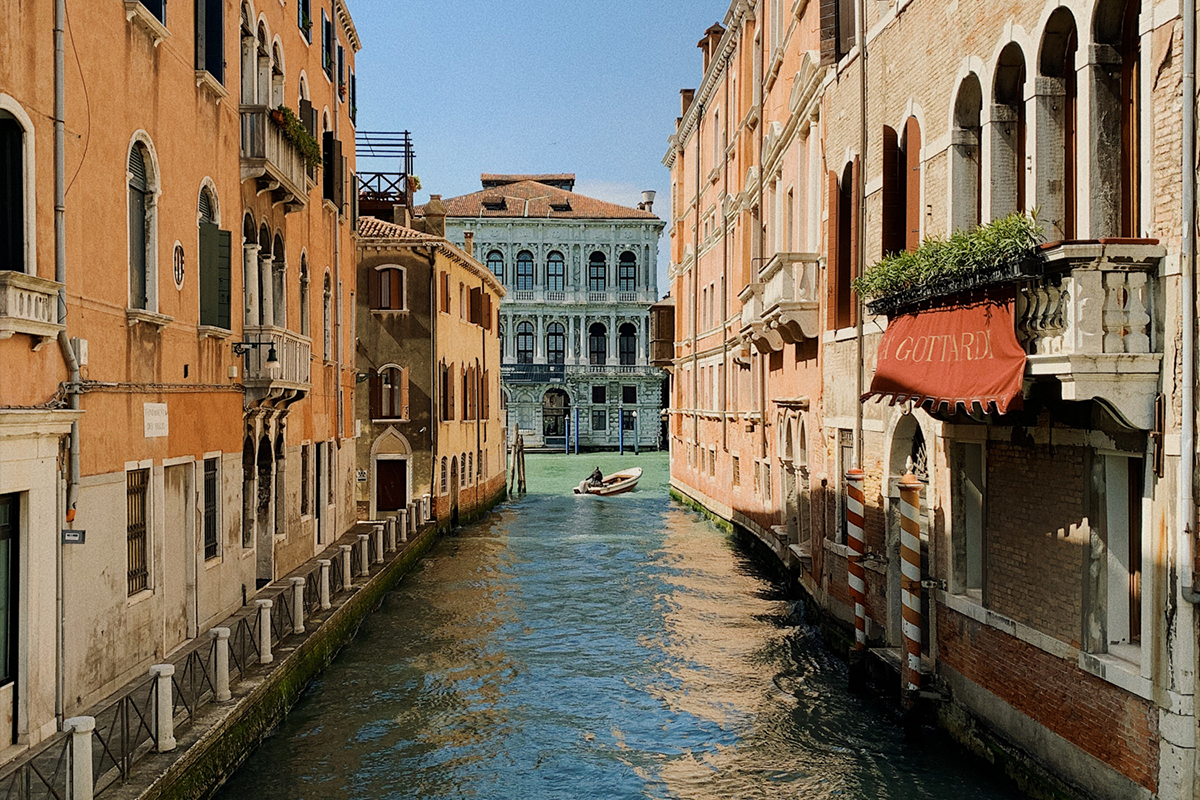
What attracted you to it in the first place?
The first time I visited Venice I was very young, maybe not even two years old. It was my parents' favorite destination, a short train ride from Treviso, my hometown, to find yourself in a few minutes in a completely different, unique world.
We would spend entire days getting lost among the calli and campielli, even accompanied by my beloved grandparents or groups of friends. The most important photographic memories I have were taken right here, and I often find myself dusting them off and reliving them with sweet emotion.
Venice has therefore always grown with me, or perhaps I have grown with her. Yet every time, even though I have always seen and admired it, it is like the first time, like when I was two years old.
What do you love about Venice’s artistic community?
I appreciate the Venetian artistic community's ability to combine, on one hand, an interest in contemporary artistic research, thus maintaining a constant eye on the future and innovation, and, on the other, its ability to enhance and preserve the uniqueness of the local art scene and its traditions.
It is no coincidence that the city, for most of the year, gravitates around the organization of the well-known "Biennale", an event that attracts the presence of artists, curators, critics, and visitors from all over the world; it comes alive not only at the Giardini and at the Arsenale (the two places that host the exhibition) but with various collateral exhibitions located throughout Venice.
At the same time, the presence on the territory of private galleries, museums, and foundations does not exclude the possibility of appreciating the beauty of the lagoon and the respect for its peculiarities: their activity is aimed not only at the promotion of established artists of international fame but also of emerging local artists.
What is your favourite place in town?
One of my favorite places in Venice is the Fondamenta delle Zattere, located in the Sestriere of Dorsoduro.
This curious name derives from the fact that here in the past carpenters used to send, by rafts, the logs that, transported along the rivers, arrived in the lagoon.
The ideal seasons to enjoy this wonderful corner are spring and summer, where it is possible to sit on the banks of the canal and admire the view.
The Fondamenta in fact has a truly unique position; it overlooks the island of Giudecca and the beauties that this strip of land offers, such as the church of "Santissimo Redentore", designed by Andrea Palladio in 1557.
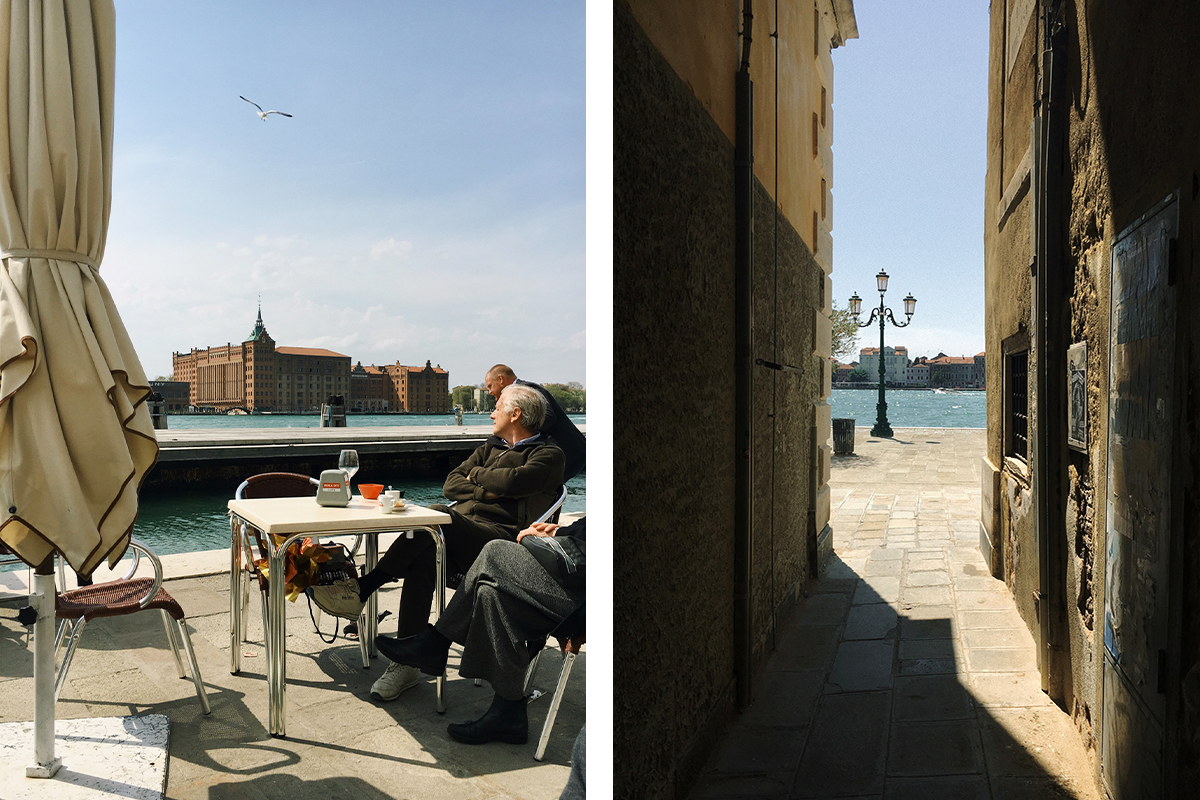
What are your favourite museums? Or hidden private palaces to visit?
For some years now I have been discovering the Venetian works of one of the greatest architects ever, Carlo Scarpa.
A native of this city, he enriched it during his life with particular interventions that have left an indelible and immediately recognizable mark.
Olivetti shop: one of its most elegant and representative architectural jewels is located in one of the most significant and well-known places in the world, Piazza San Marco.
It was created by Adriano Olivetti, who saw in this space the ideal place to transmit the cultural values of his company and to display his famous typewriters. In 1957 he entrusted the renovation and fitting out of the store to Scarpa, who, thanks to his talent, succeeded in combining novelty and innovation while respecting the surrounding historical environment. Of great visual impact is the central staircase, a masterpiece of lightness and dynamism, and the refined marble fountain on the ground floor on whose basin is placed the beautiful sculpture "Nude in the Sun" by Alberto Viani. For the various rooms that compose it, floors were created with quadrangular tesserae of marble and Murano glass in white, red, yellow and blue, the primary colors combined with white.
Querini Stampalia Foundation: overlooking the splendid Campo di Santa Maria Formosa, just a few minutes from Piazza San Marco, this sumptuous residence of the Querini family became the headquarters of the Foundation founded in 1869 by the will of the last descendant of the family, Count Giovanni (a cultured and philanthropic man) and, in accordance with his wishes, later transformed into a place of study and culture of great value. The particularity of the rooms and the preciousness of the furniture make it a unique place; moreover, the interventions of Carlo Scarpa in the '60s contributed to give a strong and suggestive connotation to the ground floor of the palace.
Here, his restoration was based on a measured juxtaposition of new and antique elements and on a great mastery in the use of materials, using above all water as the central decorative element.
Venini Showroom: located on the island of Murano (the island of glass-making), this store offers customers and visitors the opportunity to purchase the iconic creations incorporated in the architecture and details designed by Scarpa. Venini is the largest and most prestigious artistic glassmaker in Venice and one of the most renowned in the world. Founded in 1921, the company is recognized for its creativity expressed through the variety of vividly colored blown shapes. Carlo Scarpa was its artistic director from 1932 to 1947.
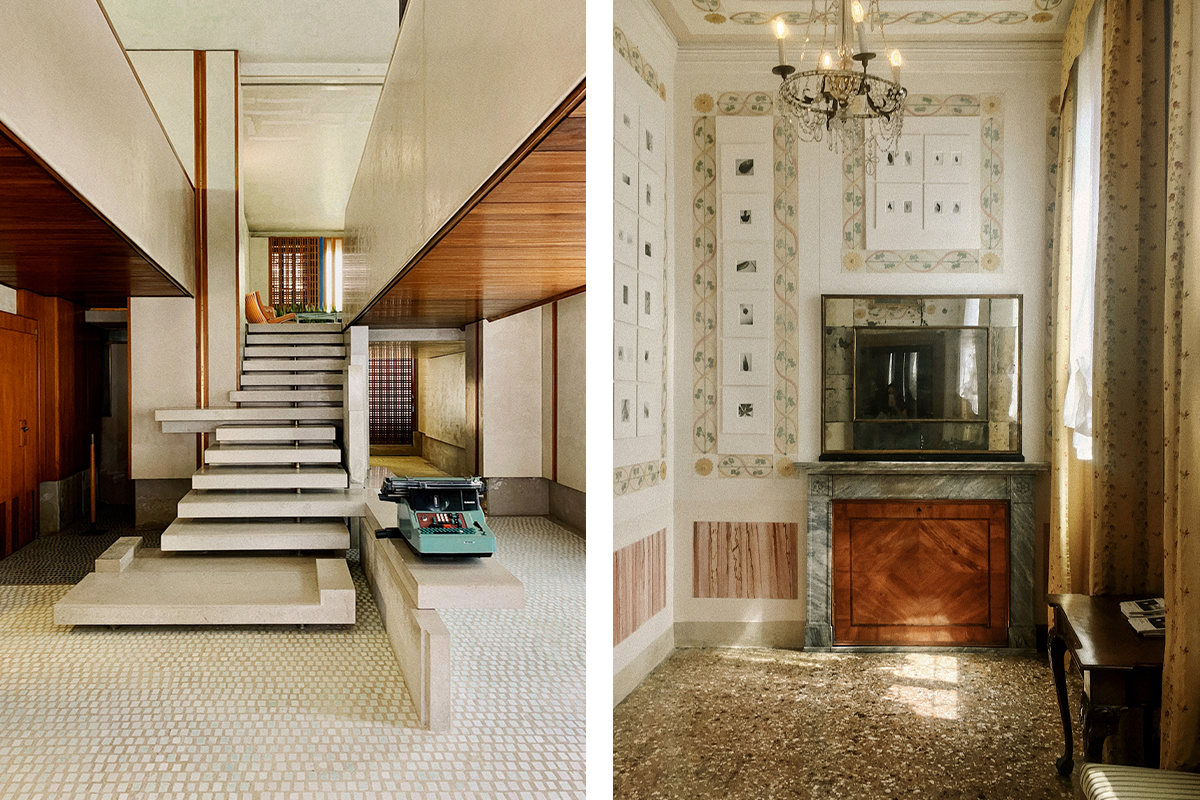
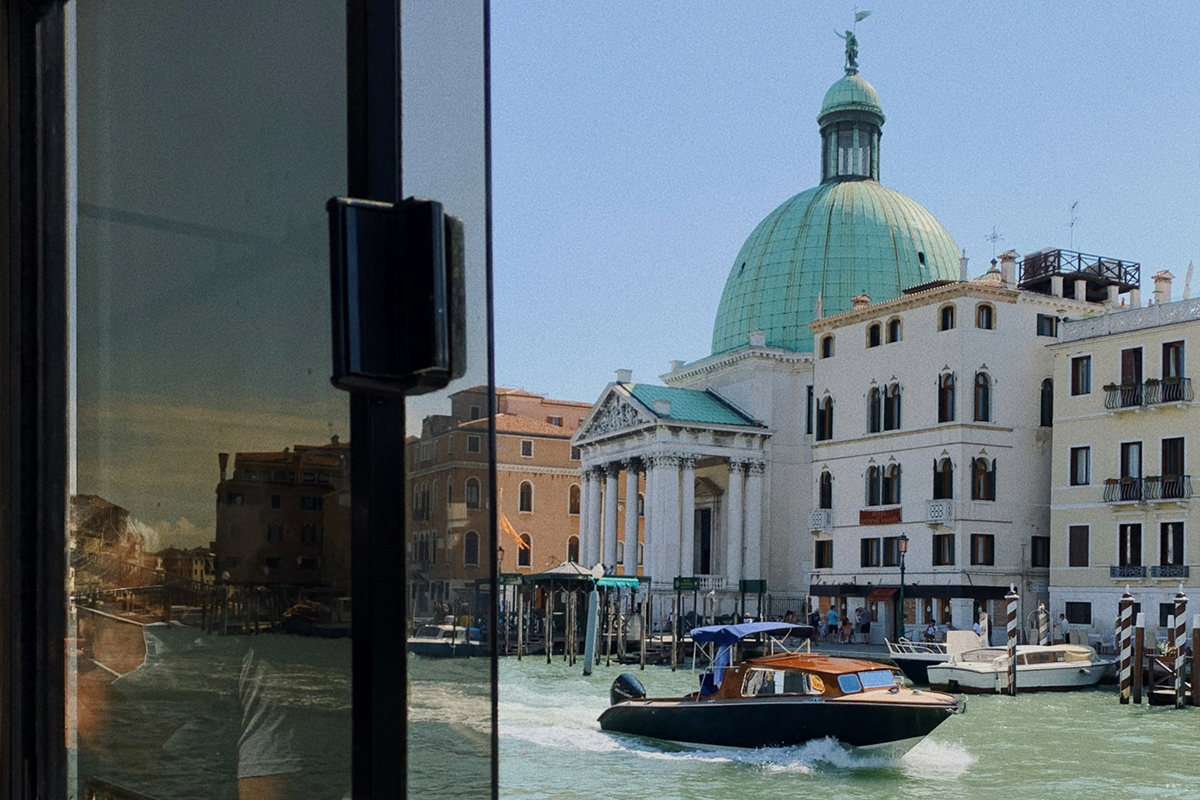
What are your favourite osterie in town?
Taverna al Remer, an elegant restaurant located in a hidden corner of Venice, at number 5701 of Sestriere Cannaregio. As soon as you reach the campiello you will be amazed by an unusual and enchanting view of the Grand Canal. The Taverna, recognizable by its brick vaults and exposed beams, is renowned for its aperitif in pure Venetian style, most often enjoyed on the outdoor wooden pier suspended over the canal. From here you can enjoy one of the most exciting and privileged views of the city, the Rialto Bridge.
For dinner, the atmosphere becomes warm and enveloping, offering original and reworked dishes, all by candlelight and with live music in the background. The homonymous "campiello" in Venetian means "small square", and in the center, there is the inevitable well as tradition dictates. In addition, the name "Remer", again in dialect, means "oar", as this place in ancient times housed the stores that worked in the construction of oars for boats.
Where to go for a cicchetto and an aperitivo in true Venetian style?
A real Venetian institution is represented by the Bacaro, a typical tavern where it is possible to taste appetizers accompanied by the famous "ombre" (a local term that indicates small glasses of wine). They are characterized by the rustic decor and a family atmosphere and are considered the most famous meeting point where you can spend carefree moments with friends.
My absolute favorites are:
One of my favourites is Osteria Al Squero, a small but cozy osteria, with a few seats inside, is located in San Trovaso. From its windows, you can't miss the view of one of the last squeri (an ancient place where gondolas are still built and repaired). In fact, it is possible to taste the wide range of cicchetti (from baccalà alla veneziana to sardines in saor, from meatballs to stuffed sandwiches) and sip the classic Spritz while admiring this still working shipyard.
This "cicchetteria" is loved above all by young people at aperitif time, used to consume its delicacies outside using the banks of the canal as seats.
Near the center of university life Campo Santa Margherita, there is the Osteria ai Pugni. To reach it, it is necessary to cross the bridge from which the bacaro takes its name, a typical place wherein the ancient tradition the inhabitants of the two opposing factions, the Castellani and the Nicolotti, used to fight with "punches" (on the upper part of the building). This bridge (not important from an artistic point of view) stands out for the famous four footprints in Istrian stone on its surface and for the possibility of admiring the fruit and vegetables for sale on the fruit and vegetable boat moored in front of it, along the canal.
This osteria, compared to the average of similar realities, is wide and spacious; a long counter offers cicchetti of all varieties, sliced meats, sandwiches and fried to accompany a refined selection of wines. Ideal for an aperitif but also for a meal with a Venetian atmosphere, here it is possible to breathe the "local" air thanks to the locals who, with their charisma, make guests feel at home.
And what about your favorite bookshop or unknown shopping surprise?
Libreria Miracoli, Campo Santa Maria Nova, 6062
This upside-down bookstore is a true treasure trove out of time. From floor to ceiling, books are arranged on high white shelves according to an apparently random classification.
In reality, this classification is only recognized by Claudio, the kind and old-fashioned bookseller willing to open his world to anyone who wants to be part of it.
Over the years he has created a vast collection despite the small size of the place; here you can find great classics available in several languages, art and architecture books, authentic theatrical texts and an infinity of old postcards. Entering here you have the feeling of being immersed in a magical corner that smells of simplicity and lived things, where each print is waiting to tell the lucky visitors its story.